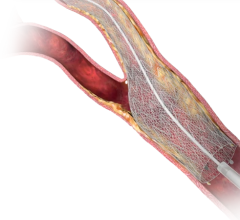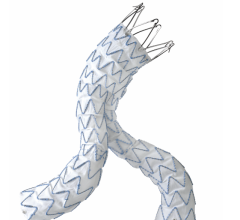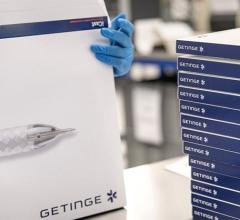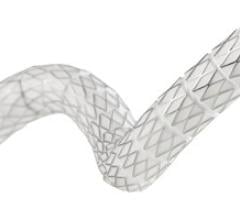January 22, 2008 - A new stent with a nanothin surface application shows promise in opening and healing blocked heart arteries without the life-threatening dangers of thrombosis and heart attack associated with drug-eluting stents, according to a study being presented at the 20th annual International Symposium on Endovascular Therapy (ISET).
Called Polyzene-F, the stent coating is 25,000 times thinner than a human hair, and is not a drug but a medically inert chemical compound that “hides” the stent from the body.
“Our preliminary data show that the inside of the blood vessel with this polymer-coated stent heals almost perfectly within 30 days, whereas with a drug-eluting stent, the blood vessel healing takes many months, if it ever happens,” said Corrado Tamburino, M.D., Ph.D., principal investigator of the study and professor of Cardiology at Ferrarotto Hospital at the University of Catania, Italy. “Our preliminary research suggests that this polymer-coated stent is a very promising solution to restenosis and thrombosis.”
Results of the first use of this coated stent in humans are being presented at ISET. In the Assessment of the Latest Non-Thrombogenic Angioplasty (ATLANTA) Stent Study at the University of Catania, 55 patients received the new surface-treated stent to open up blockages in their coronary arteries, and six-month follow-up information is available for 40 patients. Six months after implantation, the patients were studied using angiography and intravascular ultrasound (IVUS). To date, none of the stents has developed thrombosis and the binary restenosis rate is below 10 percent.
An independent laboratory also used a diagnostic test called optical coherence tomography (OCT), which images the vessels at the cellular level. Performed at the time of the initial procedure and six months after implantation of the coated stent in 15 people (27 percent), OCT results suggest that the Polyzene-F promotes healing, rather than prompting scarring.
In the mid-1990s, doctors began inserting a tiny metal cage, or stent, to keep the artery propped open, and the restenosis rate dropped to about 30 percent, studies found. Four years ago, doctors began using drug-eluting stents, devices coated with a chemotherapeutic agent, dropping restenosis rates to as low as 5 percent to seven percent in some cases, according to studies.
It has since been discovered that potentially deadly clots can form inside the drug-eluting stent, which researchers estimate kill 1,000 or more people every year. To combat the blood-clotting problem, medical experts recommend patients who receive drug-eluting stents be placed on dual anti-platelet therapy for at least one year. Dual antiplatelet therapy typically includes aspirin and the drug clopidogrel.
In the ATLANTA study, the clopidogrel was discontinued in all patients after 30 days, with no ill effects.
“Although antiplatelet therapy delays the problem of thrombosis in drug-eluting stents, when the therapy is stopped, the problem returns,” said Dr. Tamburino. “However, continuing on antiplatelet therapy indefinitely is problematic, too, because it increases the risk of bleeding, and may prevent future surgeries.”
The new surface-treated stent was designed to provide an answer to that problem. The stent is made of cobalt chromium and uses a modified open-cell design. The stent is coated with poly[bis(trifluroexthoxy)phosphazene], or Polyzene-F. The surface treatment is approximately 40 nanometers thick, too thin to be seen with a traditional microscope. The antithrombotic, bacterial-resistant coating essentially hides the stent so that the body doesn’t react to the device as a foreign object as is the case for bare-metal stents. This, in turn, promotes the healing process so that the stent is incorporated into the body more naturally, preventing the formation of blood clots.
Polyzene-F was discovered by a group of scientists and has been used in humans for several years to coat tiny particles that embolize (block) arteries and treat a number of conditions, including liver cancer, uterine fibroids and malformed arteries. It’s also been tested or is in testing on dental implants, orthopedic implants, breast implants and catheters. Because it is a coating, like Teflon or silicone, it can coat, or be woven or spun onto metals, ceramics and other polymers to improve their performance.
For more information: www.ISET.org.


 November 24, 2025
November 24, 2025 









